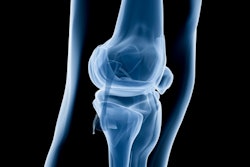
The COVID-19 pandemic has had a particularly dramatic effect on the financial health of private radiology practices. This effect could drive further consolidation in radiology as smaller practices seek a lifeline from bigger players, according to a report published July 17 in Radiology.
The financial impact of the COVID-19 crisis has affected the health of private practices in multiple ways, according to a team representing the RSNA's COVID-19 Task Force. The group includes Dr. Richard Sharpe Jr. of Mayo Clinic Arizona in Phoenix, Dr. Brian Kuszyk of Eastern Radiologists in Greenville, NC, and Dr. Mahmud Mossa-Basha of the University of Washington in Sammamish.
"Volumes of advanced imaging and a higher reimbursement service for many practices were reduced, while low reimbursement services, such as radiography, often increased," Sharpe said in a statement released by the RSNA. "At the same time, performing these low reimbursement services in ways that minimized the risk of virus transmission to staff and other patients increased the time and resources required."
During the COVID-19 crisis, imaging exam volumes have seen declines of between 40% and 90%, a trend that is likely to continue for months or even years and which could dramatically change the radiology landscape, as private practice radiologists account for about 83% of all practicing radiologists in the U.S., the group noted.
The authors described ways radiology practices have tried to cope with financial uncertainty caused by the pandemic by adjusting a variety of "cost levers."
"To survive the pandemic, private radiology practices reflected on their values and priorities to decide which levers to pull to reduce costs, such as decreasing compensation, paid time off, benefits, and hours of work, while increasing work responsibilities," the group wrote.
As an example, the group cited the experience of a private radiology practice in Michigan -- which they called Practice A -- that saw imaging exams decrease by 55.4% and work relative value units (wRVUs) by 56.6% between January and March. In May, these decreases recovered somewhat, by 76% and 64%, although both the number of exams and wRVUs remained below pre-COVID-19 levels.
This practice managed costs by reducing operation hours -- and thus radiologist and technologist work hours -- and paying radiologists per wRVU.
"Despite entering the pandemic from a position of relative strength, the impact of COVID-19 on Practice A has already been severe," the team noted. "Radiologists estimate a decrease in compensation of 40% for calendar year 2020."
Going forward, radiology practices are likely to structure their operations in a way that makes them more flexible in the face of sudden volume decreases, perhaps by adjusting physician contracts so that base salary makes up a smaller percentage of the package, with the balance tied to the practice's overall financial performance or the radiologist's productivity.
But some private practices, particularly smaller ones, won't survive the pandemic, the group warned.
"We anticipate that small radiology practices may be at greatest risk for consolidation with larger radiology groups that have a more diversified practice model regarding inpatient-outpatient mix, subspecialty service lines, and geography," Kuszyk and colleagues concluded.



















